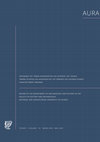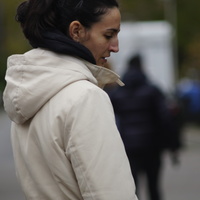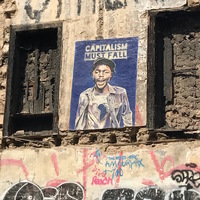Papers by Georgia Papadopoulou

Distribution and Acquisition of Metals in the 2nd Millennium BC Near East: Written Sources and Archaeometallurgical Analysis
Unpublished PhD diss. National and Kapodistrian University of Athens , 2019
This research is a multidisciplinary study of textual evidence and archaeometrically analysed met... more This research is a multidisciplinary study of textual evidence and archaeometrically analysed metal artefacts of the 2nd millennium BC Near East. The integrated approach followed, presents valuable information regarding the metallurgical practices, general metal usage preferences and the role of the human agent in the manufacturing and value ascription processes.
The distribution, exchange and trade of metals are issues that have generally been approached from two principal, but isolated, perspectives: the written sources, on the one hand, and the archaeometallurgical and geological data, on the other. Most past studies focus on one of these two aspects and specifically on a particular metal, area or time-period. However, this research is taking a more holistic and multidisciplinary approach towards the study of the exchange and use of metals, by integrating information from written texts, archaeometallurgical analyses, experimental archaeology, geological studies of the pertinent areas and ethnoarchaeology.
The textual sources used for the purposes of this research are the Old Assyrian texts from Kaneš in Central Anatolia, pertaining to trade conducted during c. 2000-1715 BC, and the letters from Amarna in Egypt dating to the mid-14th century BC, referring to gift-exchanging in service to the royal international diplomatic relations of the Late Bronze Age Near East. The collected information from the studied texts, regarding the movements and the amounts and varieties of metals transported, were used in basic statistical analyses in order to observe preference in use and exchange. Furthermore, the collective data deriving from chemically or otherwise analysed objects and relative samples were studied and evaluated as to how they correspond with the recorded qualifications and metal treatments. Particular attention is given to the importance of the external appearance, and more specifically of colour, to the identification of a metal, its properties, composition and quality and how this related to or affected selection for trading or gift-exchanging reasons.
The gathered textual information combined with the data provided by archaeometallurgically analysed metal artefacts present a number of conclusions regarding the treatment and use of metals. First, gold refinement was indeed possible, but most probably not very often used due to the fact that external appearance was more important than true content. Second, silver, and more specifically refined silver, was used as currency. Third, arsenical copper was still in use in the Old Assyrian period, when tin was imported and preferably alloyed with pure copper to produce bronze, the alloy in favour of the Late Bronze Age. Moreover, it is supported that iron was described with only one group of words, further suggesting that the meaning of all other iron-related words should be reconsidered.
Finally, the combined information from texts, archaeometric analyses and experimental archaeology show the importance of physical characteristics and external appearance – factors which are very often overlooked – to the identification, manufacture and valuation of metals and metal objects.

AURA, 2018
The Amarna letters are often used as an information source regarding the trade of goods and raw m... more The Amarna letters are often used as an information source regarding the trade of goods and raw materials in Eastern Mediterranean and the Near East during the Late Bronze Age. The Amarna archive includes a number of letters, which were exchanged between the king of Egypt and the king of Alašiya (i.e. Cyprus), one of the main copper suppliers during that period. Alašiya’s relationship with Egypt was not only diplomatic, but commercial as well, and in letter EA 35 the king of Alašiya apologises to the king of Egypt for the amount of copper he delivered. The traditional translation of the passage gave rise to much discussion and continuous debates. In this paper, it will be demonstrated that, based on the unique relationship existing between the two kingdoms, on other Egyptian and non Egyptian texts, and on philology, a different weight unit was used in this letter. This translation leads to a re-examination of letter EA 35 and the whole Alašiyan-Egyptian correspondence.
Στάδια και οργάνωση της παραγωγής από το μετάλλευμα στο αντικείμενο. Αλλαγές στο χρόνο και σύνδεσ... more Στάδια και οργάνωση της παραγωγής από το μετάλλευμα στο αντικείμενο. Αλλαγές στο χρόνο και σύνδεση με το ιστορικό πλαίσιο.
Trade of Metals in the Eastern Mediterranean During the Late Bronze Age











Uploads
Papers by Georgia Papadopoulou
The distribution, exchange and trade of metals are issues that have generally been approached from two principal, but isolated, perspectives: the written sources, on the one hand, and the archaeometallurgical and geological data, on the other. Most past studies focus on one of these two aspects and specifically on a particular metal, area or time-period. However, this research is taking a more holistic and multidisciplinary approach towards the study of the exchange and use of metals, by integrating information from written texts, archaeometallurgical analyses, experimental archaeology, geological studies of the pertinent areas and ethnoarchaeology.
The textual sources used for the purposes of this research are the Old Assyrian texts from Kaneš in Central Anatolia, pertaining to trade conducted during c. 2000-1715 BC, and the letters from Amarna in Egypt dating to the mid-14th century BC, referring to gift-exchanging in service to the royal international diplomatic relations of the Late Bronze Age Near East. The collected information from the studied texts, regarding the movements and the amounts and varieties of metals transported, were used in basic statistical analyses in order to observe preference in use and exchange. Furthermore, the collective data deriving from chemically or otherwise analysed objects and relative samples were studied and evaluated as to how they correspond with the recorded qualifications and metal treatments. Particular attention is given to the importance of the external appearance, and more specifically of colour, to the identification of a metal, its properties, composition and quality and how this related to or affected selection for trading or gift-exchanging reasons.
The gathered textual information combined with the data provided by archaeometallurgically analysed metal artefacts present a number of conclusions regarding the treatment and use of metals. First, gold refinement was indeed possible, but most probably not very often used due to the fact that external appearance was more important than true content. Second, silver, and more specifically refined silver, was used as currency. Third, arsenical copper was still in use in the Old Assyrian period, when tin was imported and preferably alloyed with pure copper to produce bronze, the alloy in favour of the Late Bronze Age. Moreover, it is supported that iron was described with only one group of words, further suggesting that the meaning of all other iron-related words should be reconsidered.
Finally, the combined information from texts, archaeometric analyses and experimental archaeology show the importance of physical characteristics and external appearance – factors which are very often overlooked – to the identification, manufacture and valuation of metals and metal objects.
The distribution, exchange and trade of metals are issues that have generally been approached from two principal, but isolated, perspectives: the written sources, on the one hand, and the archaeometallurgical and geological data, on the other. Most past studies focus on one of these two aspects and specifically on a particular metal, area or time-period. However, this research is taking a more holistic and multidisciplinary approach towards the study of the exchange and use of metals, by integrating information from written texts, archaeometallurgical analyses, experimental archaeology, geological studies of the pertinent areas and ethnoarchaeology.
The textual sources used for the purposes of this research are the Old Assyrian texts from Kaneš in Central Anatolia, pertaining to trade conducted during c. 2000-1715 BC, and the letters from Amarna in Egypt dating to the mid-14th century BC, referring to gift-exchanging in service to the royal international diplomatic relations of the Late Bronze Age Near East. The collected information from the studied texts, regarding the movements and the amounts and varieties of metals transported, were used in basic statistical analyses in order to observe preference in use and exchange. Furthermore, the collective data deriving from chemically or otherwise analysed objects and relative samples were studied and evaluated as to how they correspond with the recorded qualifications and metal treatments. Particular attention is given to the importance of the external appearance, and more specifically of colour, to the identification of a metal, its properties, composition and quality and how this related to or affected selection for trading or gift-exchanging reasons.
The gathered textual information combined with the data provided by archaeometallurgically analysed metal artefacts present a number of conclusions regarding the treatment and use of metals. First, gold refinement was indeed possible, but most probably not very often used due to the fact that external appearance was more important than true content. Second, silver, and more specifically refined silver, was used as currency. Third, arsenical copper was still in use in the Old Assyrian period, when tin was imported and preferably alloyed with pure copper to produce bronze, the alloy in favour of the Late Bronze Age. Moreover, it is supported that iron was described with only one group of words, further suggesting that the meaning of all other iron-related words should be reconsidered.
Finally, the combined information from texts, archaeometric analyses and experimental archaeology show the importance of physical characteristics and external appearance – factors which are very often overlooked – to the identification, manufacture and valuation of metals and metal objects.